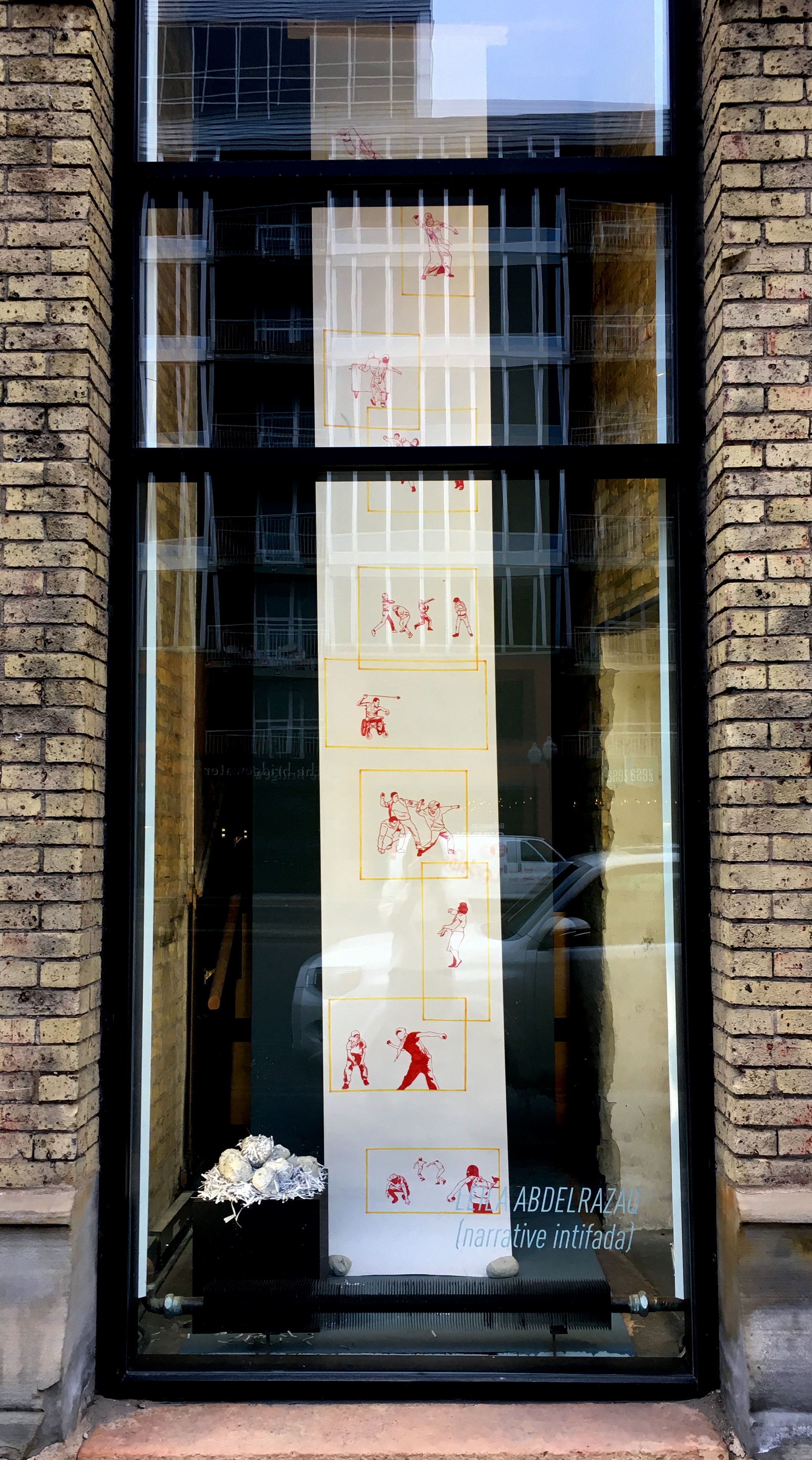 "But what if hands were actually indispensable to reaching truth, to producing objectivity, to fabricating divinities? What would happen if, when saying that some image is human-made, you were increasing instead of decreasing its claim to truth?”
"But what if hands were actually indispensable to reaching truth, to producing objectivity, to fabricating divinities? What would happen if, when saying that some image is human-made, you were increasing instead of decreasing its claim to truth?”-Bruno Latour, Iconoclash (2001)
nothing is set in stone (narrative intifada)
The Minnesota Center for Book Arts Outlook Gallery
March-April 2020
*Note: This installation was not able to be installed as planned due to the COVID-19 outbreak. The stones were originally planned to hang in the space.
nothing is set in stone (narrative intifada) examines history as a series of stories that are either lost or solidified in time through repetition, power, and oppression. We tend to treat history as if it were a natural phenomenon, a singular story that is ‘set in stone,’ so to speak. But in fact, histories are stories that are written by people. In this piece, I created handmade stones made out of homemade paper clay and positioned them in relation to minimalist renderings of iconic archival photographs of Palestinian protestors throwing stones in Intifadas and uprisings throughout time. In doing so, I ask questions about the value of national historical narratives.
In Palestinian iconography, stones are considered sacred because they are tied to the land. They are also used as tools for resisting oppression. When an unarmed Palestinian hurls a stone at a heavily armed Israeli soldier in riot gear, it is a symbolic act of defiance against militarism and colonialism, pointing to an imbalance of power using materials indigenous to the land.
So what does it mean if the stone that is thrown is man-made, if it’s not natural, but invented? Does that make it any less powerful? Does that make it less indigenous? Or does the fact that the stone is manmade lend it more power and indigeneity?
The Minnesota Center for Book Arts Outlook Gallery
March-April 2020
*Note: This installation was not able to be installed as planned due to the COVID-19 outbreak. The stones were originally planned to hang in the space.
nothing is set in stone (narrative intifada) examines history as a series of stories that are either lost or solidified in time through repetition, power, and oppression. We tend to treat history as if it were a natural phenomenon, a singular story that is ‘set in stone,’ so to speak. But in fact, histories are stories that are written by people. In this piece, I created handmade stones made out of homemade paper clay and positioned them in relation to minimalist renderings of iconic archival photographs of Palestinian protestors throwing stones in Intifadas and uprisings throughout time. In doing so, I ask questions about the value of national historical narratives.
In Palestinian iconography, stones are considered sacred because they are tied to the land. They are also used as tools for resisting oppression. When an unarmed Palestinian hurls a stone at a heavily armed Israeli soldier in riot gear, it is a symbolic act of defiance against militarism and colonialism, pointing to an imbalance of power using materials indigenous to the land.
So what does it mean if the stone that is thrown is man-made, if it’s not natural, but invented? Does that make it any less powerful? Does that make it less indigenous? Or does the fact that the stone is manmade lend it more power and indigeneity?



